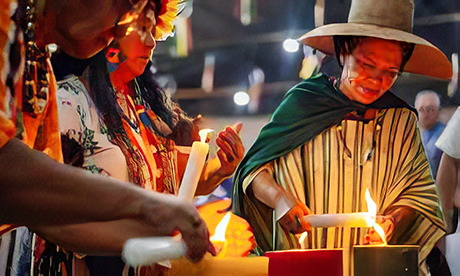Small or basic church communities are back in vogue in Brazil, and Pope Francis is stepping in to revive them, cranking up young people’s support and interest.
The once powerful Brazilian basic church communities have declined since the 1990s.
Last week, 1,000 Brazilian basic church community leaders gathered to discuss Brazil’s most pressing issues, from Amazon deforestation to unemployment. They also set up a future-focused strategy.
A central discussion point was ways to encourage more young Catholics to join them.
CEBs and Liberation Theology
Brazil’s Basic Church Community movement grew strong in the 1970s during a military junta rule when people’s basic rights were suppressed.
Priests and religious often accompanied basic church communities which played a central community role.
The basic church community movement inspired Catholics to participate directly in church life. It encouraged them to organise and act to improve their living conditions.
Liberation theology was the basic church community’s theoretical counterpart. Many liberation theologians were persecuted in the 1980s.
“Attacks on Liberation theology were attacks on the basic church communities. That process was very strong during the papacies of John Paul II and Benedict XVI,” professor of theology and long-time basic church community leader Celso Carias says.
Basic church community membership dropped from 50,000 to today’s 20,000.
Clericalism and democracy
While the Church in Brazil became more centralised, clergy took over most parish life, Carias says.
“The community … was gradually driven away from the decision-making spaces of the parishes.”
What was challenged was the kind of spirituality directly connected to social causes which the basic church community stimulated.
Carias says resurrecting the relevance of basic church communities in Brazil will take daily effort – effort that ignores resistance.
An outgoing church
Pope Francis is an important CEB supporter. Last week, he sent a video to motivate basic church community members at a national gathering, urging them to keep working for an outgoing Church.
One of the 50 Brazilian episcopate members at the gathering is delighted that many clergy participated. But “there is a huge resistance among many in the Church to accept the basic church community model,” he says.
“Many people continue to prefer a closed Church … that looks only to itself. We have many barriers to overcome.”
He suggests working with popular movements and community organisations as Francis does.
Beginning again
Members of Brazilian Indigenous groups were also at the gathering. Some led the liturgy.
Bishop Luiz Fernando Lisboa says “A person who was not an enthusiast of the basic church community told me that ‘only in a Church like that did the Indigenous and other traditional peoples have a place’.”
“It was a moment of conversion.”
Many Youth Pastoral Ministry leaders at the gathering were invited to work with veteran leaders to reorganise basic church communities throughout Brazil.
Bible circles are reviving, and young people are joining them.
“We have to educate and form new leaders. That is how we will change things,” basic church community leader Edson Canchilheri says.
In rural areas, basic church communities can help communities as they have formerly – promoting solidarity and practical support and supporting rural associations striving for better conditions for farmers, Canchilheri says.
Source
